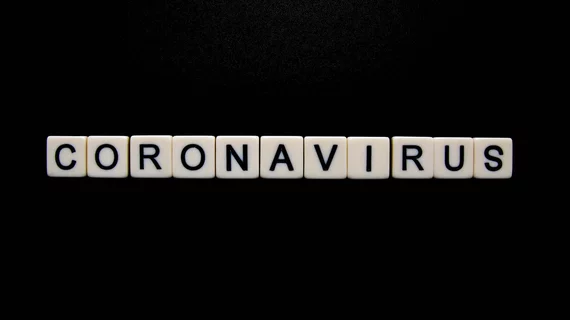Chest MRI a viable alternative to chest CT in COVID-19 pneumonia follow-up
Chest MRI can act as a potential alternative to chest CT in follow-up of COVID-19 pneumonia when ionizing radiation exposure is a consideration, according to a study published online in Clinical Imaging.
For the study, lead author Shahram Akhlaghpoor, MD, and colleagues at Pardis Noor Medical Imaging Center in Tehran aimed to review and depict the common MRI features of COVID-19 pneumonia in a laboratory confirmed case series. They selected eight patients who had presented to their outpatient imaging clinic, all of whom had had mild COVID-19 symptoms during the acute phase of the disease and did not require supplementary oxygen therapy.
The patients first underwent chest CT (1-mm slice thickness with a 16-slice scanner). Once typical, indeterminate, or atypical features of COVID-19 pneumonia had been identified in these patients, a dedicated multisequence chest MRI was performed on each patient the same day using a 1.5T MR system.
Both MRI and CT images were reviewed by a radiologist with 10 years of experience. Five patients were found to have typical CT features, with ground glass opacities and consolidations, readily visible on different MRI sequences. Three patients had indeterminate or atypical features that were also easily seen using the MRI modality.
“Our preliminary data on eight COVID-19-positive patients showed that common CT manifestation of COVID-19 pneumonia, such as bilateral multifocal ground glass consolidative, nodular, or reticular opacities can be identified and distinguished on MRI, although the imaging features are not specific,” the researchers write in their discussion section.
“Our study drives home the fact that chest MRI can act as a potential alternative to chest CT in follow-up of COVID-19 pneumonia, although further studies are warranted,” they comment. “Although MRI is not the modality of choice for evaluation of pulmonary opacities, it has similar capabilities in detection of COVID-19 pneumonia when compared to chest CT.”
Akhlaghpoor et al. also noted, however, that the potential risks associated with infection control after using imaging equipment is a major limitation to MRI utilization in the COVID-19 era.
The authors further observed that, because the study involved a small number of “relatively young” patients with a mean age of 40.63 (+ or – 12.64) years old, larger, more diverse studies that include patients of diverse ages are warranted to elucidate more details about the lung MRI findings of COVID-19.
Such studies are needed to reliably examine the diagnostic accuracy, sensitivity, specificity, false negative rate and cost effectiveness of lung MRI compared to CT in diagnosing COVID-19 pneumonia, they note.
“There is no doubt that development and adoption of a standardized MRI protocol is required prior to clinical implementation of this technique,” the authors conclude.
